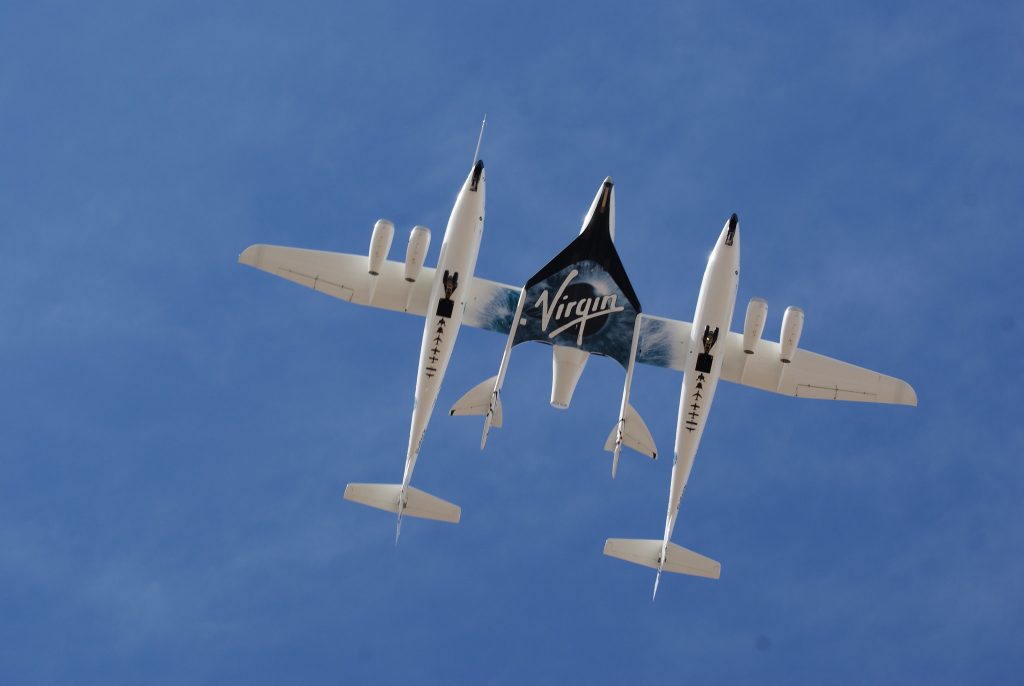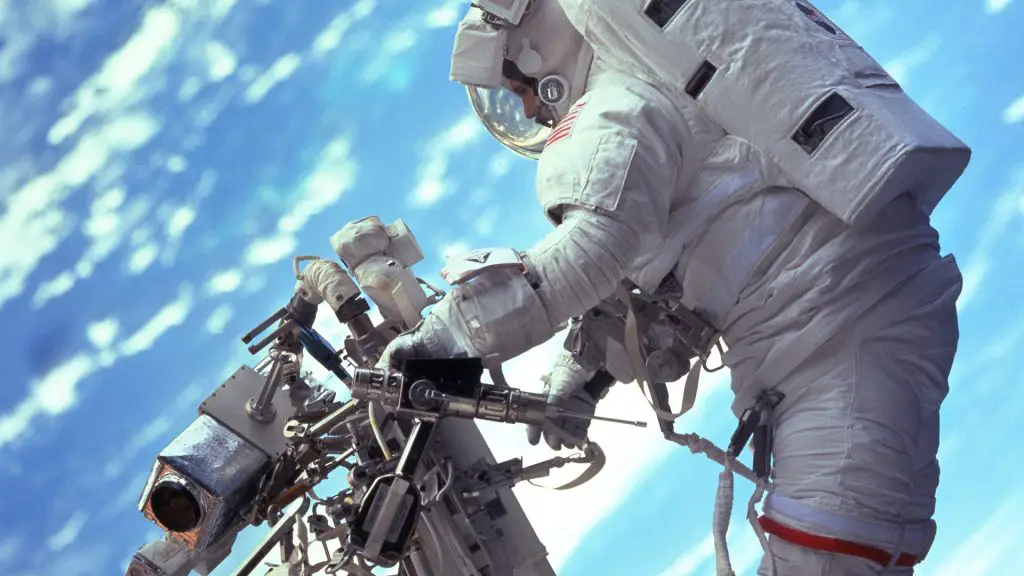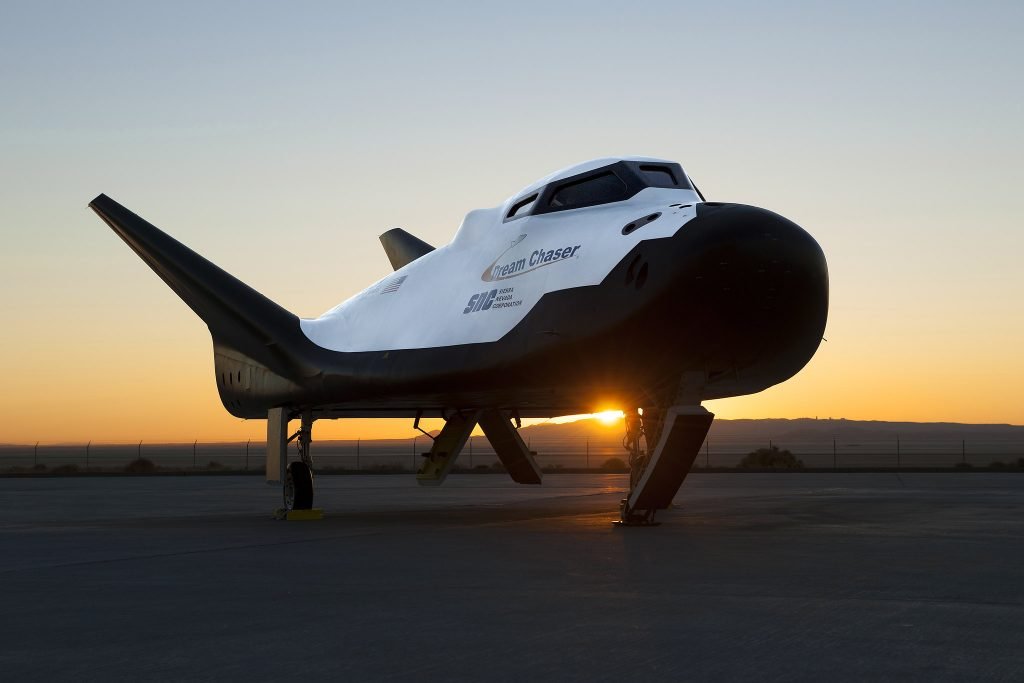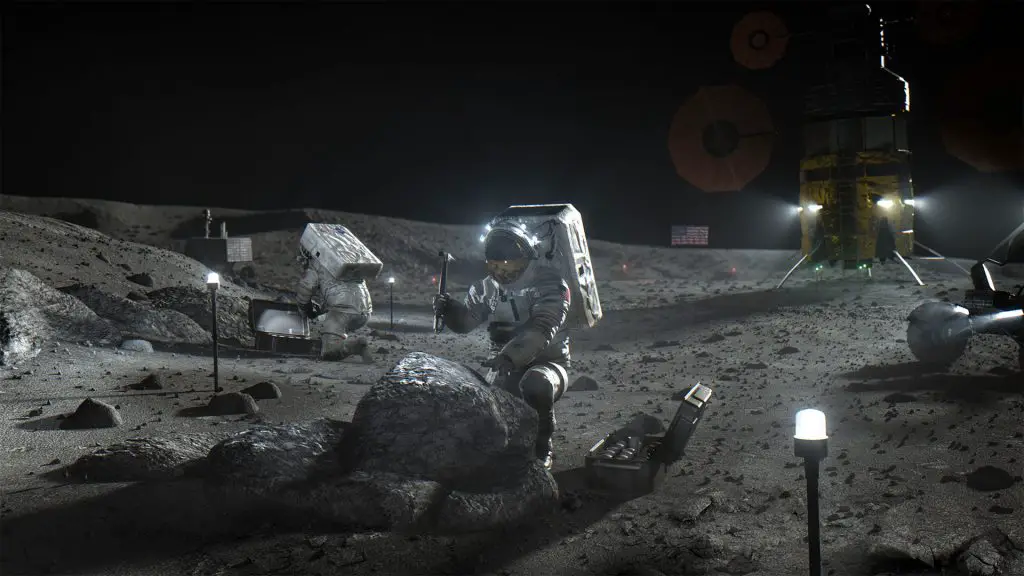Any links on this page that lead to products on Amazon and other companies may be affiliate links and we earn a commission if you make a qualifying purchase. Thanks in advance for your support!
Astrobiology, Panspermia and The Search for Life Across The Galaxy.
So, did our ancestors come from outer space? There is no simple answer to that question – yet. There is a lot of exploratory work being undertaken, as well as extensive investment and planning, in probing regions beyond our own world to increase our knowledge and understanding. Meanwhile the debate continues…
The OSIRIS REx robotic space probe (ref 1) secured material from the asteroid Bennu, over 200 million miles away (320 m kms).Its precious cargo of soil collected from the primordial rocky surface of that small 263m world was recovered after landing back on Earth in September 2023.

Credits: NASA/Goddard/University of Arizona
NASA scientists discovered that the sample container on-board contained carbon and hydrated material left over from the early formation of the Solar System – this could provide evidence of the building blocks of life being common across the deep reaches of our planetary grouping.
But what if the soil samples from future objects in the Solar System contained something far more interesting, perhaps evidence of preserved basic cellular life, bacteria or even viruses that have lain dormant on the surface of that asteroid, having arrived there through a “panspermia” spread of basic life across the Solar System millions of years ago?
What is “Panspermia”?
Exobiologists are now considering whether signs of life itself, past and even present, may exist under the surface of Martian soil, or beneath the icy crust of the moons Europa and Enceladus. The search for life across the Solar System is now a key part of robotic and human spaceflight missions for the future.
But is life perhaps drifting through space in the form of protected bacteria and even viruses, seeding planets as “panspermia” – does it exist as a common feature and could this process have bought about the origin of life on Earth?
Could there be “galactic panspermia” and, even more incredibly, is it possible that humans once lived on Mars?
The concept of Martian meteorites seeding the Earth millions of years ago and establishing early life on this planet is controversial – a variation of this is the science-fiction story-line that an early Martian civilisation deliberately seeded the Earth with life, as used in the Hollywood movie “Mission to Mars” (2000).
These extraordinary ideas are currently being debated by astronomers and astrobiologists. Some, including Prof. Chandra Wickramasinghe in the UK, have even suggested that flu pandemics like the Covid 19 variant have origins from extra-terrestrial sources with panspermia resulting in the origin of life on the Earth itself.
The origin of life and SETI
Traditional astrobiology research has focussed on the concept of “abiogenesis”, where life evolves from the basic amino acids and organic compounds that were present for example on the early Earth’s surface.
However, some astrobiologists argue that protected microorganisms could be drifting across deep galactic space, dormant within meteorites and comets in a form that might be able to eventually “seed” suitable extra-solar planets in nearby star systems.
SETI, the Search for Extra-terrestrial Life, (ref 2) is built into space research and astronomy. Over 4,350 extrasolar planets orbiting other stars beyond the Solar System have been discovered to date and this has raised hopes that soon life-bearing planets similar to the Earth will be identified.
It has been estimated that there could be as many as 40 bn Earth-sized planets orbiting in the habitable “Goldilocks zone” of Sun-like stars and Red Dwarfs in our Milky Way Galaxy, 11 bn of which may be Sun-like stars.
Has life arisen on any of these Earth-sized planets and if it did so, was it via “abiogenesis”, or panspermia?
Abiogenesis vs Panspermia
The traditional approach to the Earth’s biology is that life arose from an independent “abiogenesis” basis, relying on organic building blocks being present on the planet’s surface after the formation of the local solar system, with life then evolving over millennia.
Exobiologists have so far considered the possibility of life occurring on the planet Mars, or within subsurface oceans on the ice moons Europa and Enceladus.

Image masbt, Flickr
But could simple life forms like bacteria and “extremophiles” be much more widespread and, indeed, be drifting through interplanetary space in the form of dormant spores and bacteria?
Panspermia is regularly promoted as a concept by Prof. Chandra Wickramasinghe, a former colleague of the famous cosmologist Sir Fred Hoyle. Prof. Wickramasinghe, working from the Universities of Buckingham and Cambridge, first proposed with Prof. Fred Hoyle in 1974 that some dust in interstellar space was largely organic, being composed of carbon compounds, including silicates, inorganic carbon/graphite and ices of various kinds.
Whilst this was a dramatic idea at the time, planetary scientists now accept that organic molecules are common in the Solar System and probably the wider Galaxy.
Can basic life survive in Space?
Recent results of the EXPOSE experiments (ref 3) on the International Space Station (ISS) have shown that protection layers around organic biological samples such as those offered by meteorites could indeed allow for life to exist in a hostile environment.
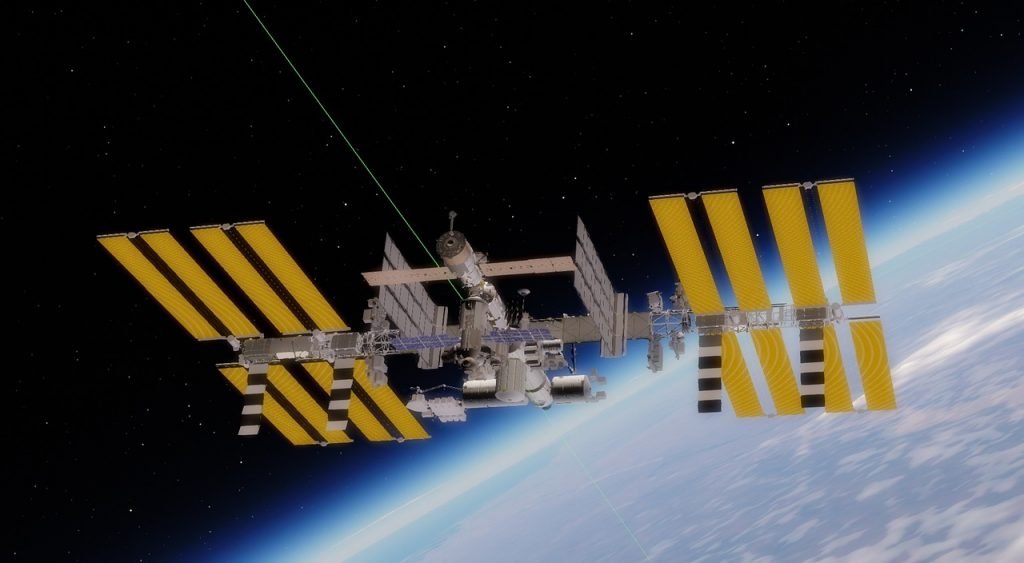
Could it be therefore that bacterial endospores will survive in the harsh vacuum of space, despite the heavy UV-B radiation conditions and extremely low temperatures that will be present – could this material withstand a dynamic entry into a planetary atmosphere?
Research on the ISS continues. From 2008 to 2016, protected samples exposed to space and then returned from the ISS have survived even after 1.5 years mounted outside the ISS. In one sample, 100% of bacterial endospores that were placed in Mars-type conditions were considered viable. Tobacco spores could even survive and be grown as plants on Earth.
The EXPOSE results represent the first data evidence that basic “cryptoendithic life” can be hardy enough to survive movement through outer space.
In recent years , exterior sampling experiments on the ISS by Russian cosmonauts appeared to indicate the presence of some “alien” bacteria, although this claim is still being assessed by international scientists.
Of key importance to the panspermia debate and exobiology research directions, this factor is also of direct relevance to future Mars-mission sample analysis, as well as planetary protection sterilisation for lander probes and the future exploration of possible life bearing environments across the solar system and beyond.
Panspermia possibilities
The method of how life may be distributed across the Galaxy is an approach that panspermia encompasses. However, how life actually began is another matter.
“Lithopanspermia” is a possible method for the transportation of life-bearing molecules. This methodology provides for extremophile-type microscopic life existing in rocks and soil being blasted into space from planetary collisions involving asteroids and comets.
Alternatively, “radio-panspermia” proposes that organisms might travel through space via radiation pressure from stars – it is argued in this case that the lethal action of UV and X-ray radiation plus the vacuum of space does not completely destroy all the microorganisms and enough may possibly survive to “seed” a suitable planetary environment.
A third possibility might be “pseudo panspermia” – here, in a relatively soft molecular process organic building blocks of life originate in interstellar dust clouds in space and they are transported to the surface of planets where life then developed via abiogenesis.
Many who study astrobiology point out the chances of life occurring across the Galaxy are encouraging – the famous “Drake equation” of Prof. Frank Drake used statistical probability analysis and concluded that millions, if not billions, of life-bearing planets could exist in the Universe given its extreme age.
What is the lifespan of the Galaxy?
The immense age of the Universe, estimated at 13.8 billion years, is often quoted as being a convincing argument that life must exist elsewhere – our Milky Way galaxy may have been around for at least half of that period and therefore, if panspermia has been operating during much of the immense timescale life bearing activity could , it is argued, be prevalent across the entire Cosmos.

Wickramasinghe’s 2015 book “The Search for our Cosmic Ancestry” focussed on a Universe-wide approach to exobiology and the panspermia theory.
Alternative views
So, what is the official stance of the scientific community on the panspermia hypothesis?
Astronomers Iosif Shklovsky and Carl Sagan were negative, noting how the harsh environment of space could seriously damage viable DNA or RNA in spores and microorganisms.
However, in response Prof. Wickramasinghe and others consider that given enough microbes in a cloud form, some could survive in space in a dormant form. Proponents argue that the unexpected evidence that was obtained in the 1970’s for the widespread occurrence of complex organic molecules in interstellar space, combined with perceived flaws and inadequacies in the standard theories of the origin and evolution of life on the Earth, makes panspermia credible.
Prof. Wickramasinghe notes that over a period of three decades no data has come to light that contradicts the theory of cometary panspermia. He maintains that a wrong theory could not have survived scrutiny over this length of time.
By contrast, Prof. Ian Crawford of Birkbeck University of London believes that whilst it is theoretically plausible for microbes to travel between planets in meteorites, this has not yet been demonstrated. He has stated that if the panspermia process proves to be physically possible, then it follows that life may have arrived on Earth from outside, perhaps from Mars or some other location in the Solar System, although there is so far no evidence for this.
Prof. Crawford considers that panspermia, if it occurs, does not solve the problem of the origin of life, but merely relocates that event to somewhere else in the Universe.
The main theoretical advantage of panspermia as a concept, he believes, is that wherever ‘somewhere else’ was it may have permitted more time for the pre-biological chemical reactions that led to the origin of life, but he notes that we do not currently know that more time was actually required.
Ian Crawford considers that the only way to determine if panspermia has been operating in the Solar System is to explore other habitable, or past-habitable, environments on other planets such as Mars. If panspermia has been operating it will predict that all life found throughout the Solar System (if any) will have a common origin and thus share key biochemical characteristics (e.g. the same genetic code).
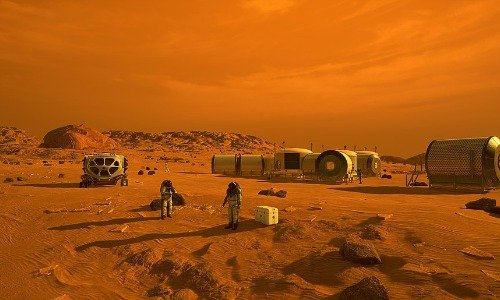
On the other hand, if life evolved independently elsewhere, and did not travel between planets, Prof. Crawford notes that we would expect that any life we find would be quite different to our own.
Future research directions
SETI and the possibility of organisms surviving the harsh space environment has taken a new impetus in recent years.
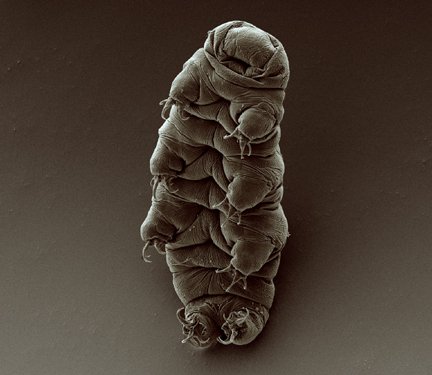
Orbital experiments such as BIOPAN on Russian Foton capsules, EXOSTACK on the LDEF satellite and EXPOSE on the ISS showed that when given basic protection, spores, lichens and even tiny animals known as tardigrades (left) could survive for a several years in space. Image Wikimedia
An additional idea to reflect on is whether biological contamination from the Earth itself might impact on biology across the Solar System.
A section of the Surveyor 3 lunar lander that was bought back by the Apollo 12 crew in 1969 was found to contain Earth bacterium that appeared to have survived over two years.
Controversy surrounds whether this bacterium actually came from laboratory contamination on arrival back on Earth, but the excitement it caused gave added concerns over future contamination from lander probes to Mars and destinations such as the moons Titan, Europa and Enceladus.
One would expect panspermia bacteria and viruses, if they do exist, would enter the Earth’s atmosphere at a very high stratospheric altitude. To investigate this, balloon sampling was carried out by the Indian Space Research Organisation (ISRO) between 2001-6. The results were interesting for many researchers and considered by Prof. Wickramasinghe to indicate that living cells existed with an interplanetary origin in air samples above a 41 km level to where he considers air from lower levels of the atmosphere could not normally be transported.
NASA however subsequently conducted atmospheric sampling in 2010 before and after hurricanes – results of this work suggested that large-scale convection could transport Earth bacteria to very high altitudes into the upper reaches of the atmosphere.
Space mission results
Many will ask, if panspermia is true then why is life non-existent on other planets in our Solar System?
The answer to this question may be of course that so far humans have only just touched the surface of the Moon, Mars, Titan and a limited number of comets and asteroids. Space exploration with orbital and deep-space probes has only being going for just over 60 years and humanity is in the very early days of astrobiology research and the search for life acrossthe Cosmos.
However, it has to be said that, for the present, no evidence exists proving or disproving panspermia or, indeed, the presence of life beyond the Earth’s atmosphere and across the Solar System.
No meteorite has been found with any evidence of past or present life inside it – these have generally come from the wider Solar System, plus the Moon and Mars.
Research balloons and sounding rockets via ISRO and NASA projects have produced uncertain and contrasting conclusions on upper stratosphere level living extra-terrestrial cell presence and origins.
Whilst the comet probes Stardust (NASA) and Rosetta-Philae (ESA) did find evidence of the amino acid glycine, a building block for life, plus 16 basic organic compounds, again no past or present life was discovered.
The lunar landers like the NASA Surveyors and Russian Luna series sample return missions, plus the Apollo missions which bought back 382kg of Moon rock and soil, also found nothing that indicated life past or present.
Interested in learning to fly a microlight? Check out this article, here.
Future mission plans
What of future space missions to seek out answers to life in space and the question of panspermia?
Several future robotic orbital and landing missions are planned for Mars, the icy moons and asteroids / comets. Many believe though that it will need the presence of astronaut explorers on the surface of Mars and other longer distance targets like Europa and Enceladus to properly solve the question of life in the Solar System.
The Mars 2020 Perseverance rover (NASA) (ref 4) has been searching for signs of past and present life from 2021, storing material for a future sample return mission, the NASA/ESA “Mars Sample Return” missions intended for the late 2020’s/early 2030’s.
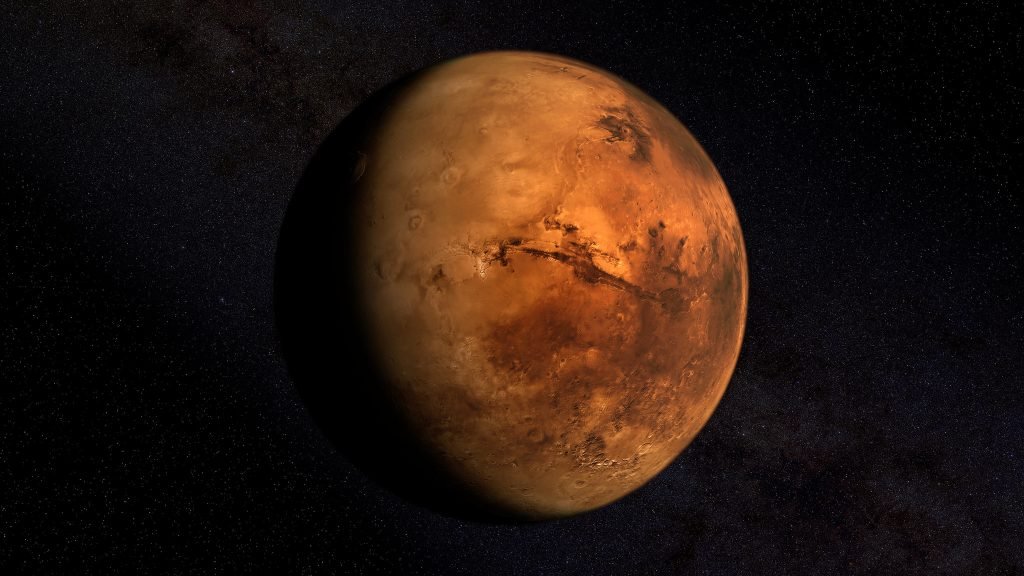
The Exomars rover Rosalind Franklin of ESA’s will also be drilling deep below the surface to seek potential past and present life from later in this decade
The 2022 deep-space robotic JUICE orbiter mission of NASA’s to study the icy moons of Jupiter, Europa, Ganymede and Callisto, will be investigating if these worlds could possess sub-ice oceans where life might possibly exist. The Europa multiple flyby mission of the late 2020’s, including both an orbital and lander mission, will follow-up on this project.
Human landings on Mars might occur beyond the 2030’s. NASA and international partners like ESA and JAXA will then undertake surface life studies, drilling at depth, local in-situ lab analysis and undertaking a large sample return to Earth – until this occurs, many consider it unlikely that the real answers to possible life on Mars, past or present, will be forthcoming.
Panspermia and diseases on Earth
One theory that has become topical again because of the 2020 Covid 19 pandemic is the possibility that diseases like influenza and SARS (Severe Acute Respiratory Syndrome) may have origins outside the Earth’s atmosphere, in-line with the wider panspermia concept of life surviving in the interplanetary conditions of space.
Prof. Wickramasinghe co-wrote the book “Diseases from Space” with Fred Hoyle in the 1970’s and this questioned whether the deadly 1918 flu pandemic that claimed millions of lives may have resulted from a virus entering the Earth’s atmosphere originating from beyond this planet. The speed of the transmission spread of the 1918 flu virus at a time of
limited worldwide air travel has been cited by some that the virus came from beyond the Earth’s atmosphere and was spread globally in a matter of hours.
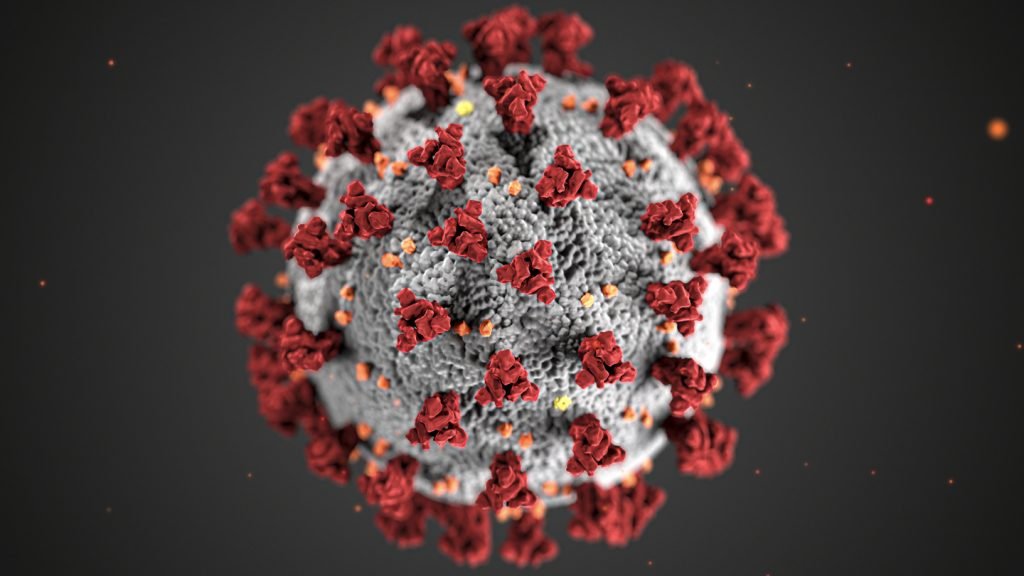
One idea being suggested is that a meteorite carrying the Covid 19 virus could have bought in the disease to the Earth, after entering the atmosphere in 2019.
These disease origin ideas are obviously hotly contested across the scientific world.
Solutions to the debate
So, how will the arguments on both sides of the panspermia debate be resolved?
Many consider that , assuming basic life is found at some location via lunar, Martian, icy moon or collector sample missions in orbit/deep space, comparing any life forms found, whether past or present with Earth-type life will be a crucial test of the panspermia theory.
As Prof. Ian Crawford points out, if the biochemistry characteristics – the genetic code of Earth life – and alien life is found to be the same, then panspermia may well be recognised and accepted.
Until probes find direct evidence of space-borne life, either on planetary or moon surfaces or via deep space sample collection, the panspermia debate will continue.


